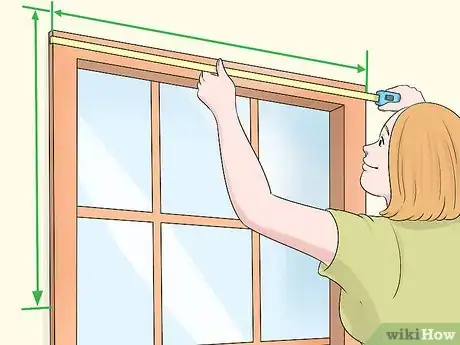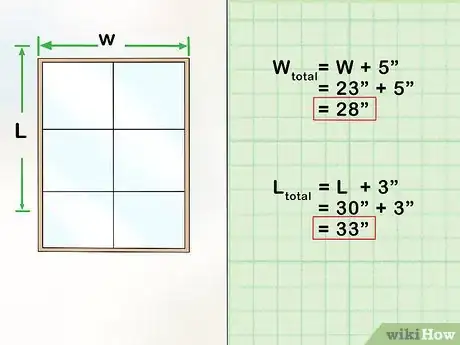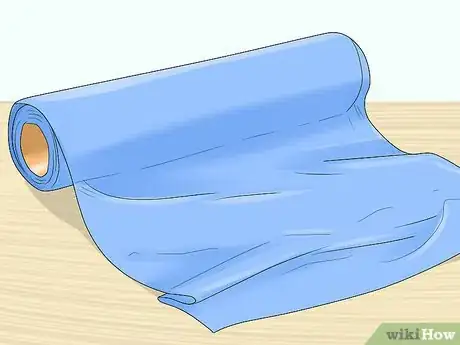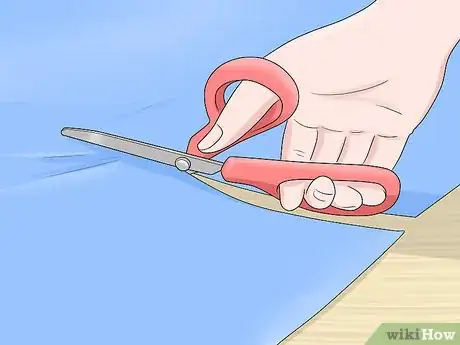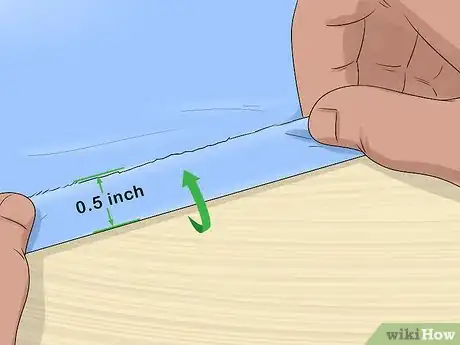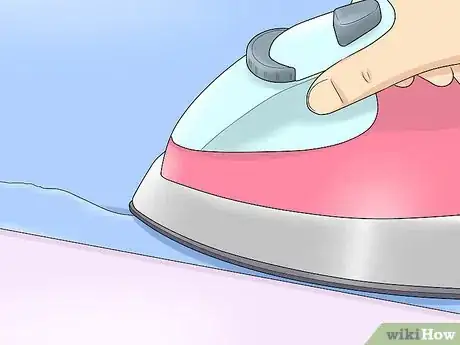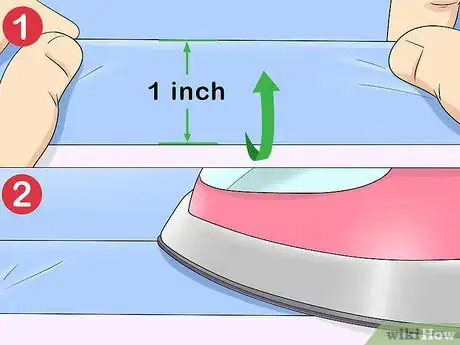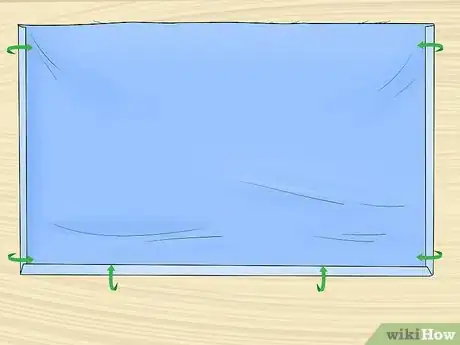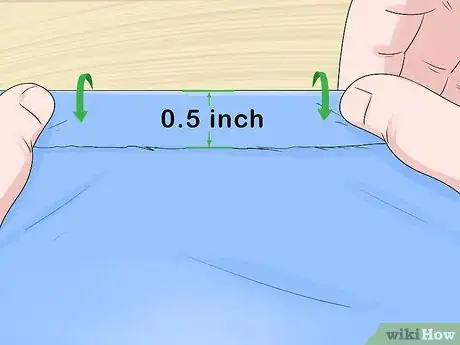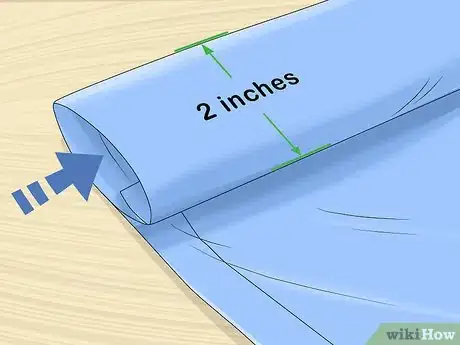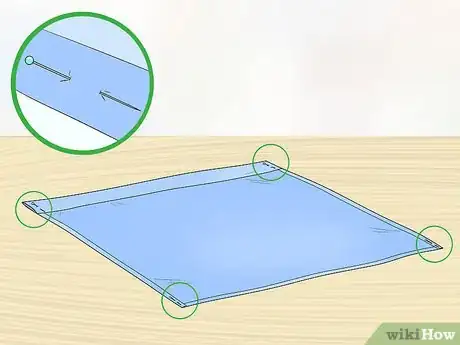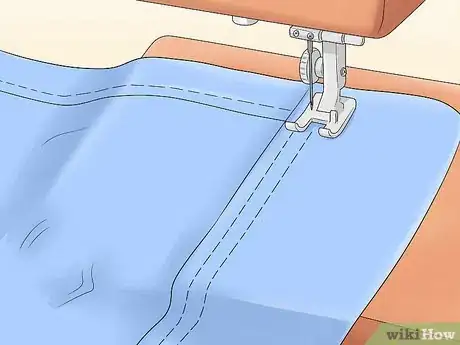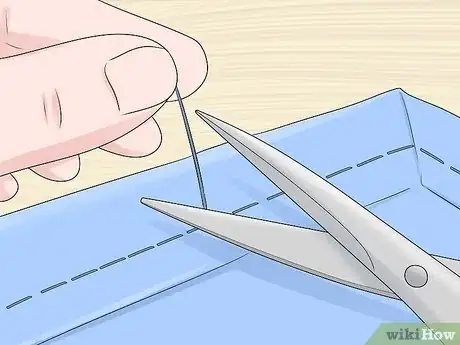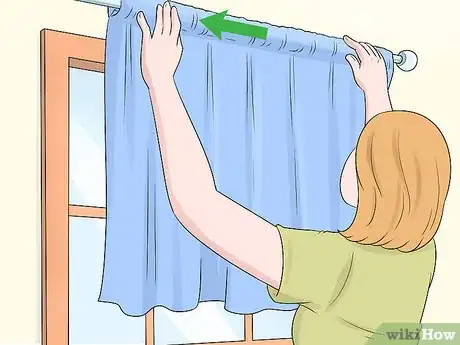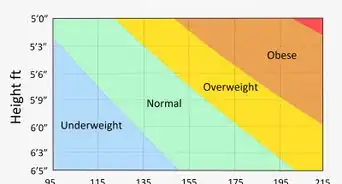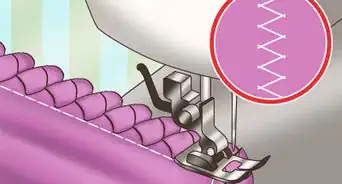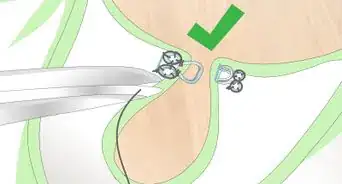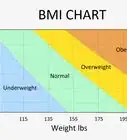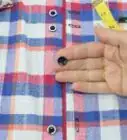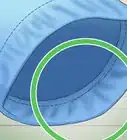This article was co-authored by wikiHow Staff. Our trained team of editors and researchers validate articles for accuracy and comprehensiveness. wikiHow's Content Management Team carefully monitors the work from our editorial staff to ensure that each article is backed by trusted research and meets our high quality standards.
This article has been viewed 56,364 times.
Learn more...
A valance is a short curtain that you can hang alone to cover part of a window, or hang over another piece of drapery or blinds as an accent. You can easily sew your own valance with some basic sewing materials and a little sewing knowledge. You will also need a sewing machine to sew a valance. Try making your own valance for a unique window treatment in any room of your home.
Steps
Measuring and Cutting Your Fabric
-
1Measure the width and length where you will hang the valance. To determine the dimensions of your valance fabric, measure the area where you will hang the valance. Measure the window from side to side to get the width of the valance, and measure from the curtain rod to the part of the window where you want the valance to end to get the length of your valance. Record these measurements.
- You can make your valance as long or short as you want, but they typically only cover the top quarter or third of the window. Therefore, if your window is 45 inches (110 cm) long, then your valance might be 12 inches (30 cm) to 15 inches (38 cm) long.
-
2Add 5 inches (13 cm) to the width and 3 inches (7.6 cm) to the length. To ensure that you will have enough fabric to hem the edges, you will need to add onto the measurements you took. Add 5 inches (13 cm) to the width measurement and 3 inches (7.6 cm) to the length measurement.
- For example, if the width measurement was 23 inches (58 cm), then add 5 inches (13 cm) for a new total of 28 inches (71 cm). If the length measurement was 30 inches (76 cm), then add 3 inches (7.6 cm) for a total of 33 inches (84 cm).
Advertisement -
3Multiple the width by 1.5 if you want a gathered valance (optional). For a gathered look, multiply the width of your window by 1.5 and use this as your width measurement for the valance fabric. For example, if the width of your window is 30 inches (76 cm), then you could multiply by 1.5 for a total of 45 inches (110 cm).[1] However, having a gathered curtain is a style choice, not a necessity.
-
4Choose a fabric for the valance. You can use any type of fabric you like for the valance. Choose a lightweight fabric for a sheer valance, or opt for a fabric that is meant for home décor for a heavier valance.Make sure that you purchase a little more fabric than you think you might need.
- Opt for cotton, lace, or a sheer fabric for a lightweight curtain.
- Choose brocade, flannel, or wool for a heavier curtain.
-
5Cut your fabric to the desired dimensions. Lay your fabric out on a flat surface with the print side facing down. Then, measure and mark the inside of the fabric with fabric chalk or a pencil to indicate where you need to cut it. You can use a ruler or other straight edge to draw lines on the fabric. Cut along these lines
Folding the Edges
-
1Fold over the short edge of the fabric inward by 0.5 inches (1.3 cm). Keeping the print side facing down, fold 0.5 inches (1.3 cm) of the fabric inwards. Doing this will hide the raw (cut) edge of the fabric.
-
2Iron the edge using a low heat setting to flatten it. Use an iron to crease the edge of the fold. Iron all along the folded edge until the fabric stays in the folded position without holding it down. Make sure that you use a setting on the iron that will not damage your fabric, such as a delicate setting for delicate fabrics.[2]
- Use the lowest setting if you are unsure. You can also place a t-shirt or towel over the fabric and iron over that to protect the fabric.
-
3Fold the edge inward again by 1 inch (2.5 cm) and iron the fold. Next, fold the fabric over again in the same way, but make a 1 inch (2.5 cm) fold this time. Iron this next fold in the same way as the first one. This will complete the folds on one side of your valance fabric.
-
4Repeat the process for the other short edge and bottom of the valance. You will need to repeat the folding and ironing process on the other short edge of your valance and on the bottom edge of the valance. Go through all of the steps for each of these edges. Then, move on to the top edge, which requires a slightly different process.
-
5Fold the top edge over by 0.5 inches (1.3 cm) and iron the edge. Measure 0.5 inches (1.3 cm) from the top edge of the valance fabric. Then, fold the fabric over so that the raw edge will be hidden. Iron this edge the same way that you ironed the other edges.
-
6Fold the top edge over by 2 inches (5.1 cm). To create a loop for the curtain rod to fit through, measure 2 inches (5.1 cm) from the edge of the new fold you just created. Then, fold this 2 inches (5.1 cm) section of fabric over towards the inside of the fabric piece.Next, iron all along the edge of this final fold to crease it.
- This section will serve as the loop for your curtain rod after you sew it in place.
Securing the Edges
-
1Place a pin in each of the corners. Before you take your valance piece to the sewing machine, place a pin in each of the valance's corners to help keep the folds in place. You may place more pins if desired, but the creases you created with the iron should be enough to keep the fabric in place for sewing.
-
2Sew a straight stitch 0.25 inches (0.64 cm) from the inner edge on all 4 sides. Use your sewing machine to sew a straight stitch all along the edge of the inner fold on all 4 sides of the fabric. Sew about 0.25 inches (0.64 cm) from the fold all the way around to secure the folds. However, make sure to keep the stitching on the inside of the fabric. Do not sew all the way to the outer edges.
- Remove the pins as you sew.
-
3Sew an extra stitch along the bottom of the top fold. To ensure that your curtains have a strong seam to hold them on the curtain rod, sew an extra straight stitch along the bottom edge of the top fold. Sew about 0.25 inches (0.64 cm) from the bottom of the fold and sew all the way across the bottom of the fold so that the outer edges of the valance will be secured as well.
-
4Trim away any excess threads. To complete your valance, remove it from the sewing machine and trim away any excess threads.
-
5Hang the valance. Slide the valance onto your curtain rod by inserting the rod through the loop you created. Then, hang the curtain rod and fan out the valance. Make sure that the print side of the valance is facing you when you hang it.
Community Q&A
-
QuestionWhich side of the piece of fabric is the top for the valance?
 ZackTop AnswererAs the instruction indicates, start cutting with the print side down. Then, when you pin and sew hems, they will be toward the back (unprinted) side. The printed side should be the finished side or top side. However, remember to look at the printed side carefully to see if it is important that one direction is "up" and place your top fold there. For example, if the fabric is printed with a picture of a lovely tree, you do not want the tree hanging upside down. Be sure your top fold is at the top as you pin and sew.
ZackTop AnswererAs the instruction indicates, start cutting with the print side down. Then, when you pin and sew hems, they will be toward the back (unprinted) side. The printed side should be the finished side or top side. However, remember to look at the printed side carefully to see if it is important that one direction is "up" and place your top fold there. For example, if the fabric is printed with a picture of a lovely tree, you do not want the tree hanging upside down. Be sure your top fold is at the top as you pin and sew.
Things You'll Need
- Fabric
- Measuring tape
- Chalk
- Scissors
- Iron
- Pins
- Sewing machine
- Thread
